Homemade Meatloaf (as Good as Mom’s Recipe)
Homemade meatloaf. I’ve always found it a slightly curious dish. I mean, just who exactly took a loaf of bread (you know, that staple that’s happened to sustain entire populations over centuries) and thought, that’s great and all, but I bet it would be even better in meat form.
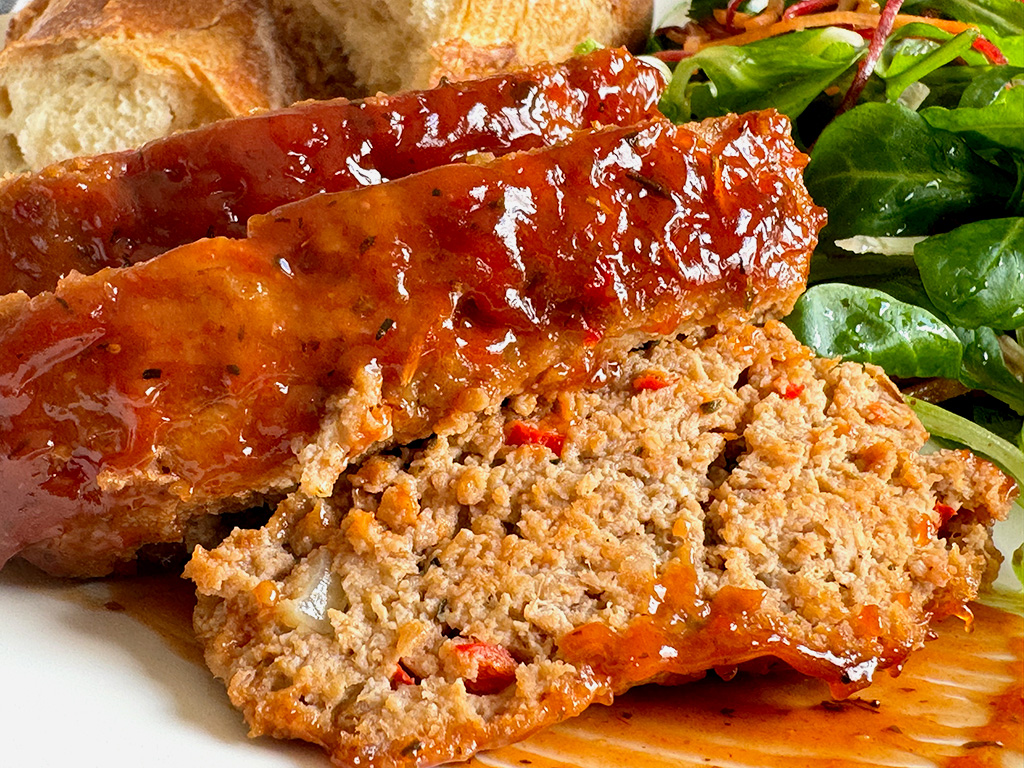
Ok, so it turns out meatloaf has origins in Germany and Belgium. And today it’s a staple of American cuisine that even has variations all over the globe. But I digress. Thanks to those meat-adoring pioneers who had the imagination to take some ground meat and shape it into a loaf, I say credit where credit’s due. Every so often I get a craving for meatloaf. And when that happens, it’s game over. I have to have it.
There’s something about that savory, juicy, oven-baked meaty goodness that satisfies the soul, evoking memories of home-cooked meals and cozy family dinners growing up. And thanks to some easy additions, this homemade meatloaf is a game changer. Tender, succulent, and with an ideal glaze-to-meat ratio in every bite, it’s perfection on a plate.
The Secret to the Best Homemade Meatloaf
Meatloaf seems to suffer from bad PR. It’s a dish that can conjure up thoughts of random ingredients haphazardly thrown together and then baked in the oven, which may or may not crumble to bits upon cutting into.
And that’s a shame. Because when done well, meatloaf is a thing of beauty. With a delicate balance of flavors ranging from savory and meaty to rich and even tangy, a proper meatloaf is the homiest of home cooking.
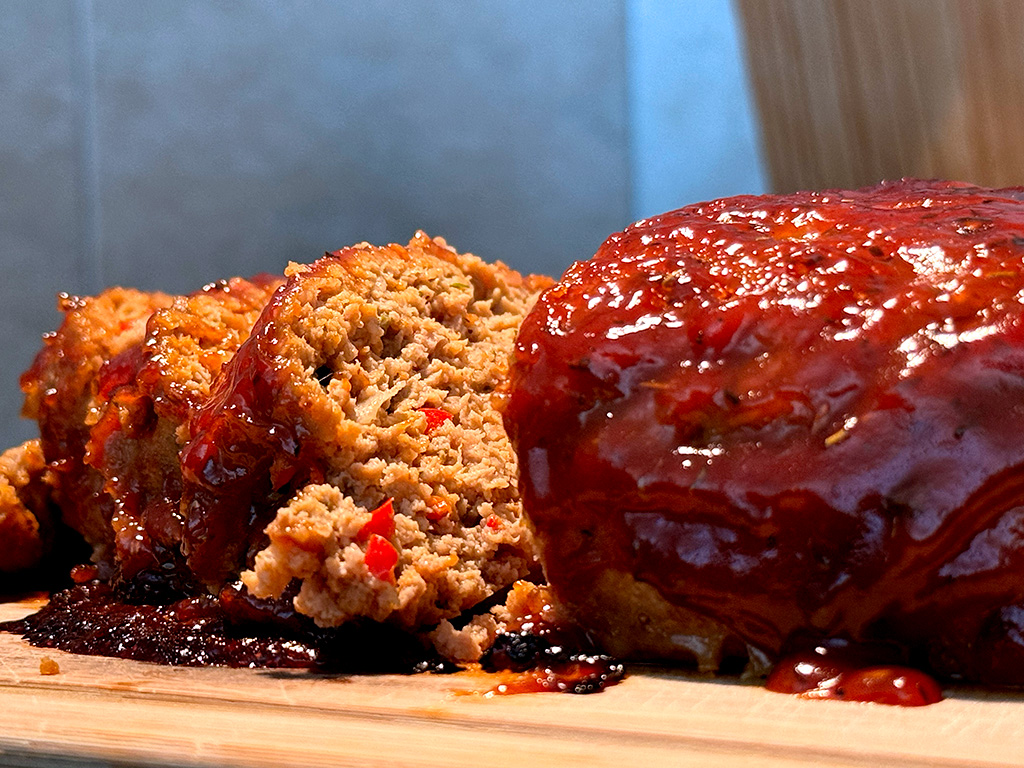
I’ll let you in on a secret. It isn’t just one addition that makes this homemade meatloaf truly special. A few tweaks over the years have really elevated this recipe.
- Breadcrumbs from real bread. First up, forget store-bought and go for the real deal. You can use a food processor or a stick blender, or just crumble up some fresh bread (or stale because why waste, right? ) to make your breadcrumbs. I usually use a few days old whole-grain bread. It adds a rustic texture and flavor that you just can’t get from the boxed stuff.
- A mixture of ground beef and pork. You can absolutely go all-beef or all-pork. But I like a 50/50 mixture of ground beef and pork. This combo brings to the table not only a good balance of flavor, but thanks to the pork, plenty of moisture. Keep in mind, if you’re going the all-beef route, don’t go too lean. 80/20, or 80% lean and 20% fat is usually a good rule of thumb.
- Diced Pepper. Don’t forget about the finely diced red bell pepper! It adds a pop of color and also brings a subtle sweetness. The best of both worlds! Just make sure to dice the pepper as finely as possible, otherwise it won’t fully cook and become soft. For bigger chunks of pepper or other veg, you’ll want to sauté them first to get them tender.
- Greek Yogurt. I get it. It’s a bit of a curveball. But hear me out. Instead of using the usual milk-soaked breadcrumbs, Greek yogurt adds a richness and tanginess that takes this meatloaf to another level. It’s also crucial to the panade (more on that below) that makes this meatloaf SO tender and succulent.
Why Use a Panade in Meatloaf
If you’re wondering what the heck a panade is, rest assured, you’re not the first. Though it sounds like one of those fancy French cooking techniques, in French, panade just means bread mash. And all it really is is a mixture of breadcrumbs and liquid.
Now if you’re wondering whether that belongs in your meatloaf, let me tell you. Yes, yes it does! That’s because when meat is heated at high temperatures, its protein fibers constrict. Starches, like breadcrumbs, for example, behave oppositely. Rather than tightening, they absorb the liquid (in this case the Greek yogurt) and form a gluey adhesive that traps the moisture and prevents the meat’s fibers from tightening too much and drying out. What you get is a meatloaf that’s soft and delicate, not rubbery or crumbly.
You can use milk instead of yogurt for the panade. But I find that yogurt adds a bit of tang that perfectly balances the sweetness of the red pepper and the savory meat.
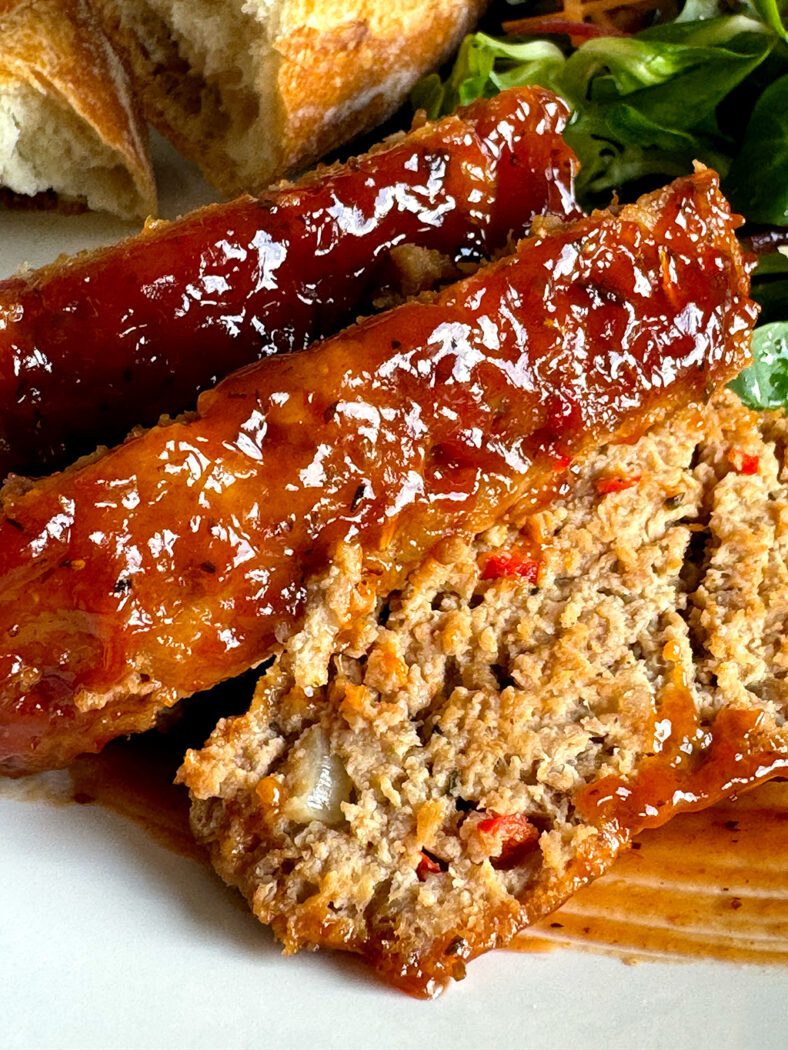
What Ingredients Keep Meatloaf from Falling Apart
The age-old question – how do you keep meatloaf from falling apart?
Don’t skip the binding agents. In addition to the Greek yogurt panade, eggs and breadcrumbs help hold everything together. These ingredients work together to create a sturdy structure that won’t crumble when you slice into it.
Too many veggies. Let me clarify, I’m not anti-veg. But do carrots, mushrooms, and peas really belong in a meatloaf? Too many vegetables get in the way of your binding agents, preventing everything from adhering nicely.
Let the meatloaf rest. Just as you would a steak, let the meatloaf rest when you take it out of the oven. Letting it rest for at least 10 minutes allows the fibers in the meat to relax, the juices to redistribute, and the meatloaf to firm up. This way you can cut a nice thick slice without the fear of it crumbling to pieces!
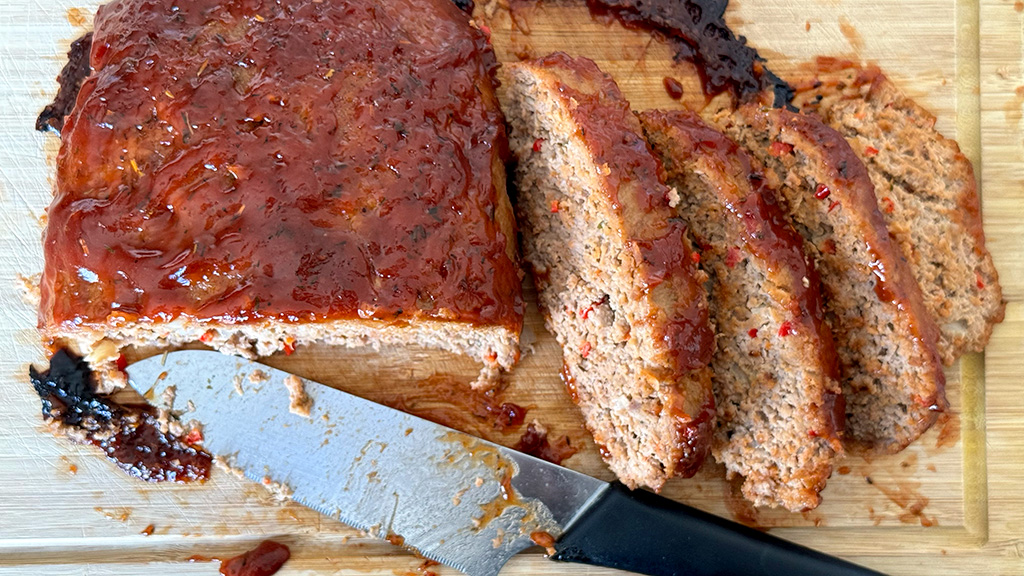
Loaf Pan or Baking Tray
When it comes to meatloaf, there seem to be two camps: those who bake it in a loaf pan and those who bake it on a baking tray. I’m firmly on team baking tray and here’s why:
Better air circulation. Baking your meatloaf on a tray allows for better air circulation around the meat, resulting in a more even browning.
Excess fat can easily drip away, leaving you with a perfectly cooked loaf that’s not swimming in grease.
The perfect glaze-to-meat ratio. Baking meatloaf on a tray allows you to hand-form a shallower loaf than in a loaf pan, which is inherently deep. Slices from the shallower loaf baked on a tray enable the ideal glaze-to-meat ratio in each bite.
What to Serve with Meatloaf
I’m a simple man, so my preferred sides for homemade meatloaf are a simple salad and crusty baguette, as pictured below. Meatloaf with a side of creamy mashed potatoes makes for the ultimate comfort meal, while green vegetables such as oven-roasted broccoli or sautéed asparagus are a perfect pairing, as well!
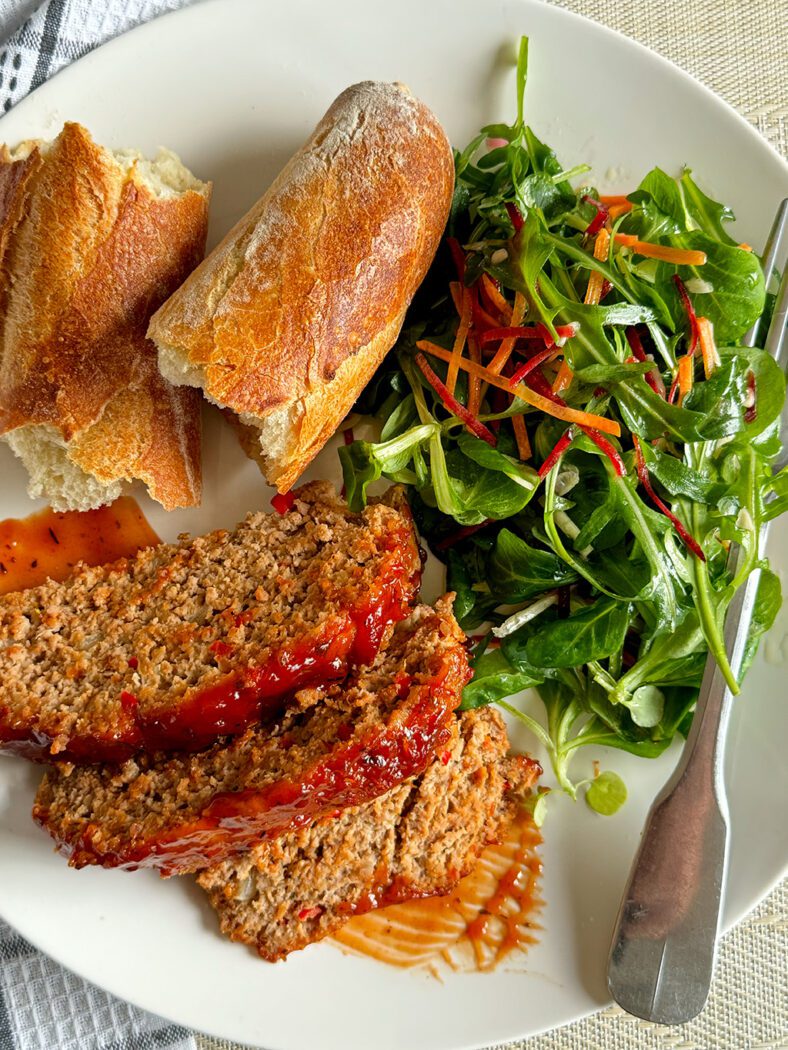
How to Make Homemade Meatloaf (Pictures and Process)
Meatloaf Glaze
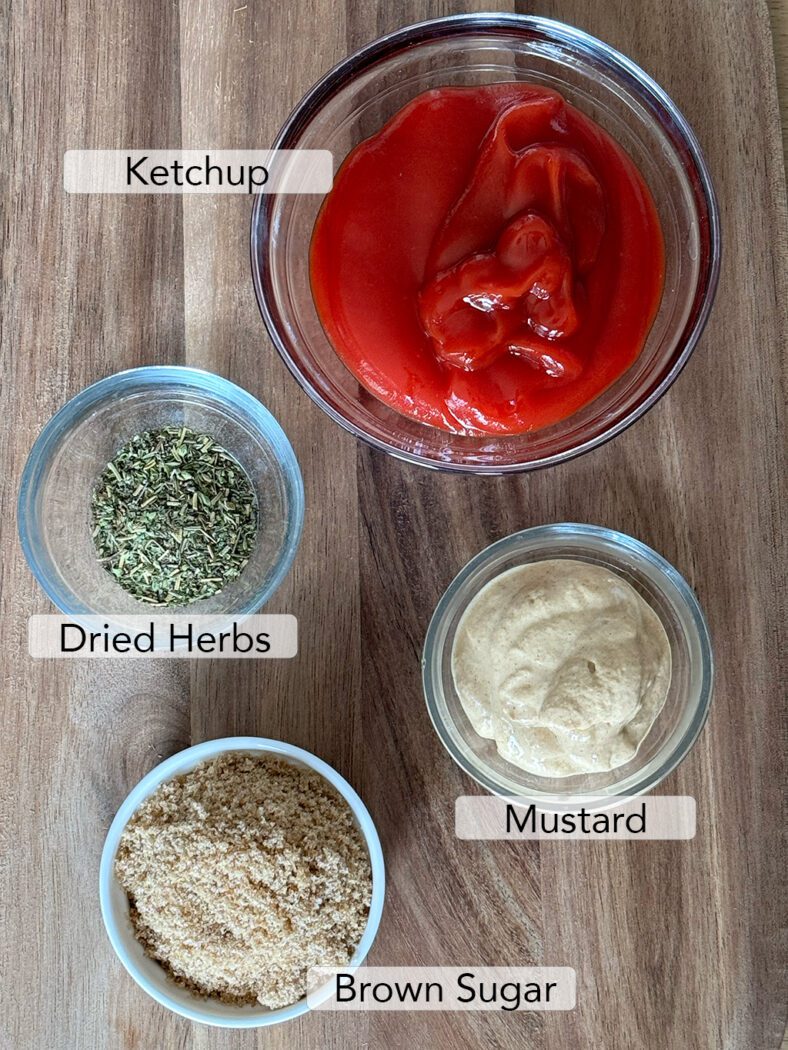
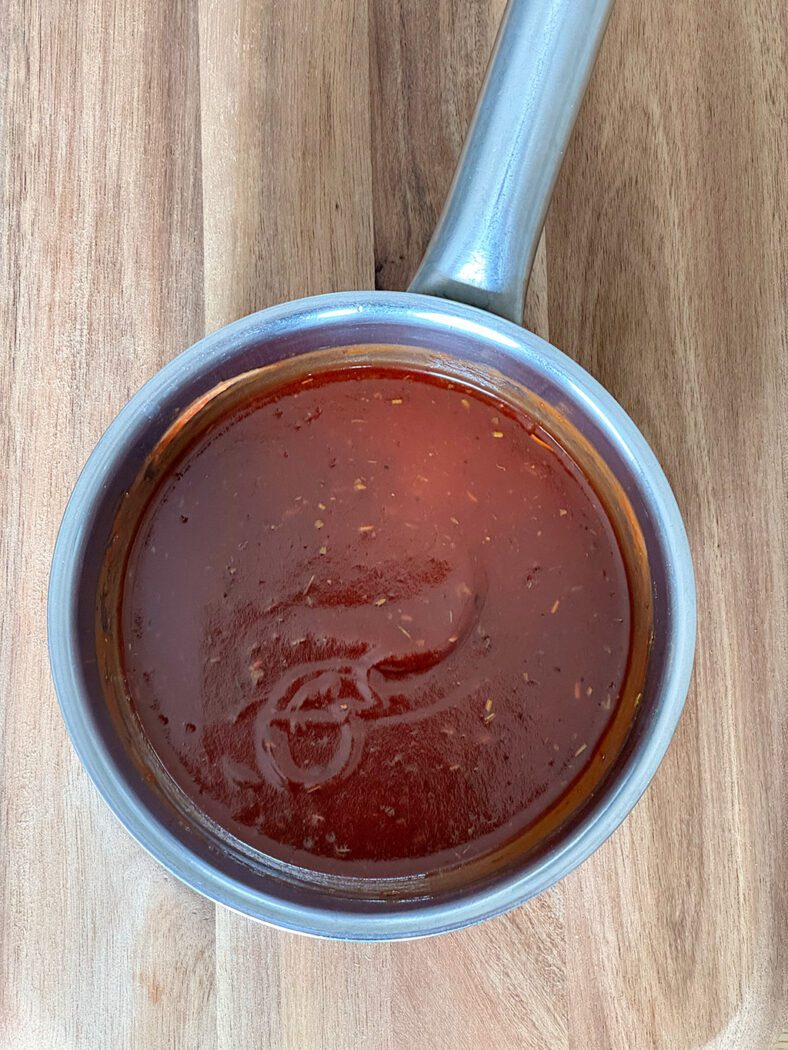
Make the glaze. Combine the glaze ingredients in a small saucepan and mix over low heat until the sugar is dissolved. Set aside.
Meatloaf
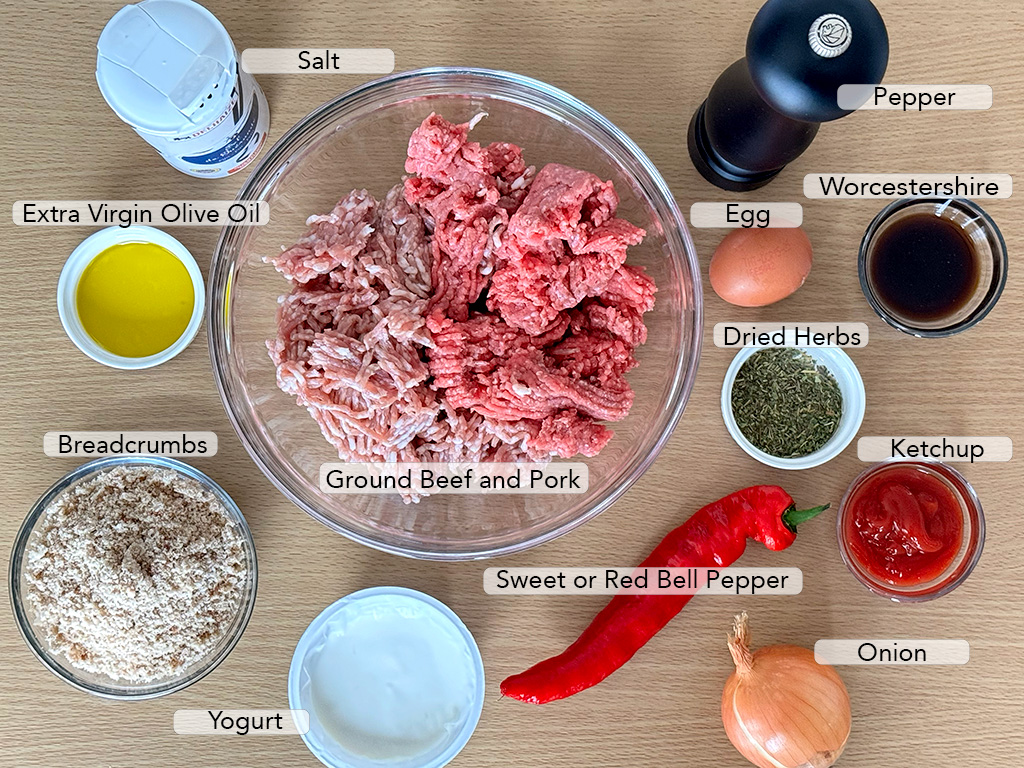
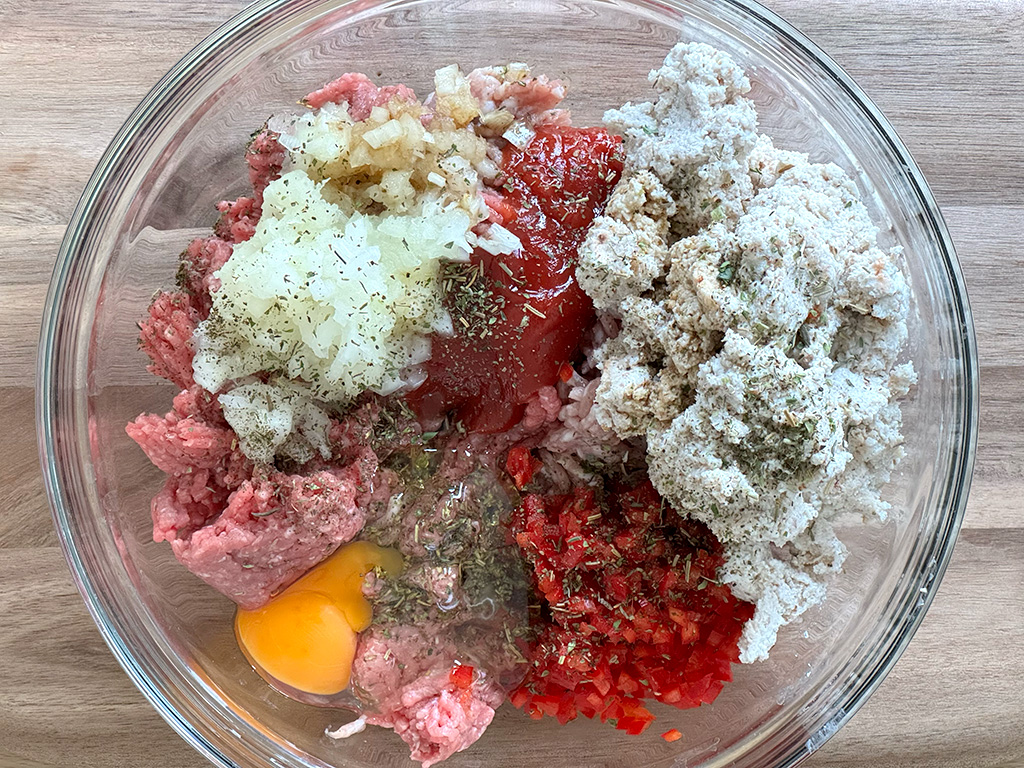
Make a paste with the breadcrumbs and yogurt. Add breadcrumbs and yogurt to a bowl so that the mixture forms a paste. Let soak for a few minutes until the bread absorbs any liquid.
Combine all the meatloaf ingredients. In a large bowl, combine all the meatloaf ingredients except the extra virgin olive oil and mix well.
Form into a loaf, working out all cracks and air pockets. Lightly glaze the top with extra virgin olive oil to help the browning process.
Bake for 30 minutes, rotating at 15 minutes. Place the meatloaf into the oven for 30 minutes. After 15 minutes, rotate to ensure even cooking and browning. After 30 minutes, remove the meatloaf from the oven. Wipe away any excess fat with a paper towel.
Glaze and bake for 10 more minutes. Using a basting brush, cover the meatloaf with glaze and return to the oven for 10 minutes, allowing the glaze to set. Pay attention to the meatloaf’s internal temperature. You want 155-165F (69-74C). Remove from the oven.
Rest and serve. Allow the meatloaf to set for at least 10 minutes before cutting and serving.
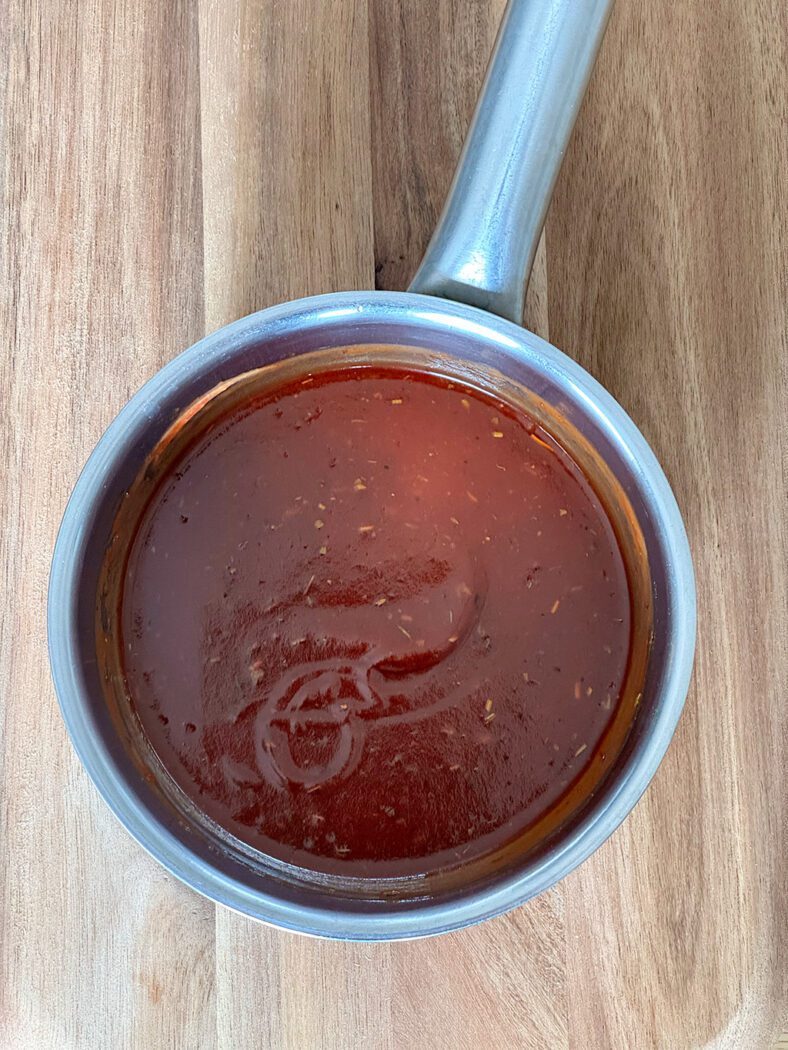
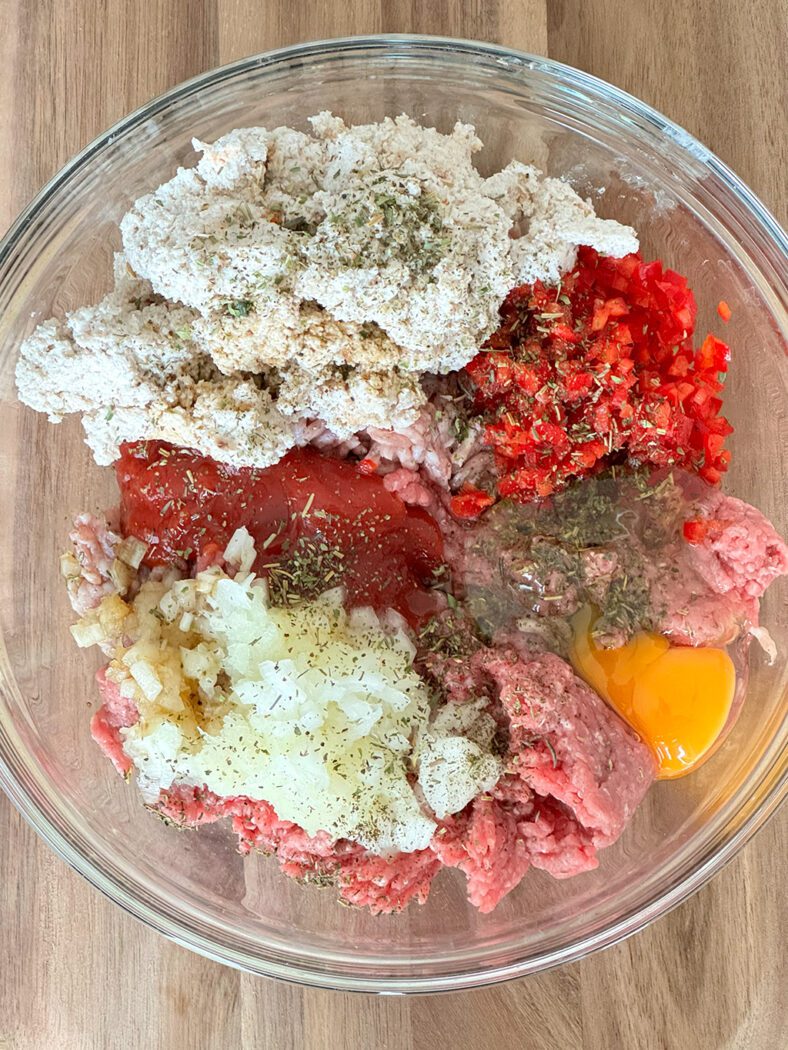
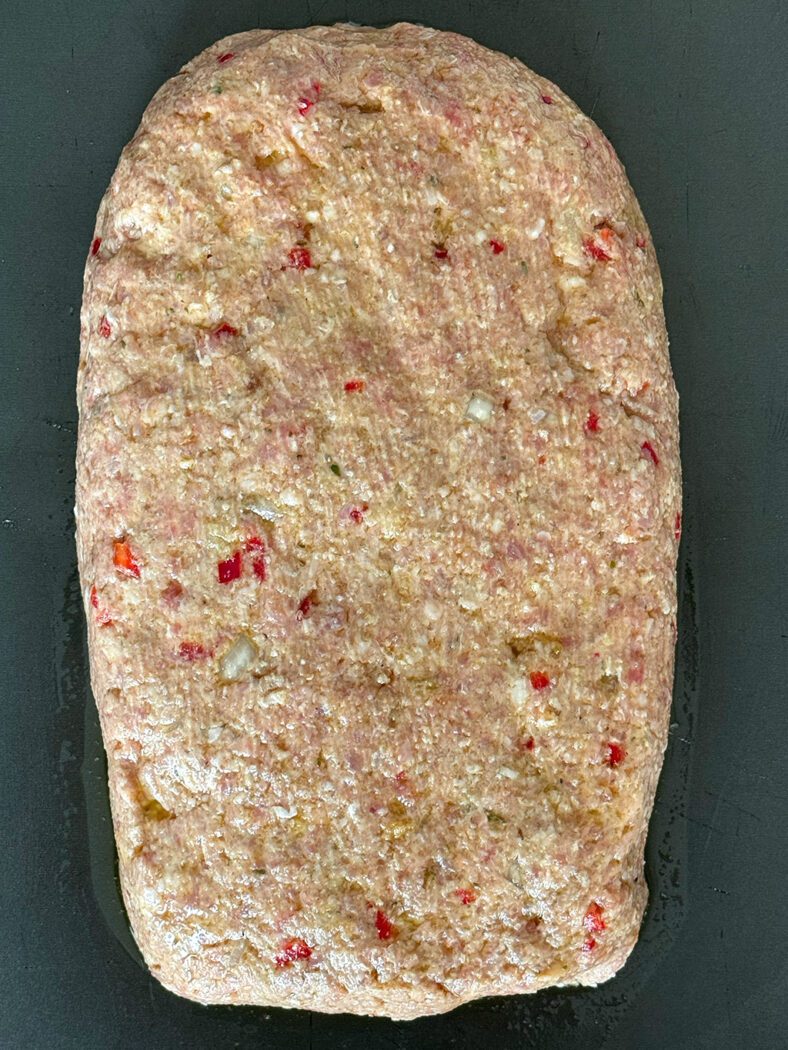
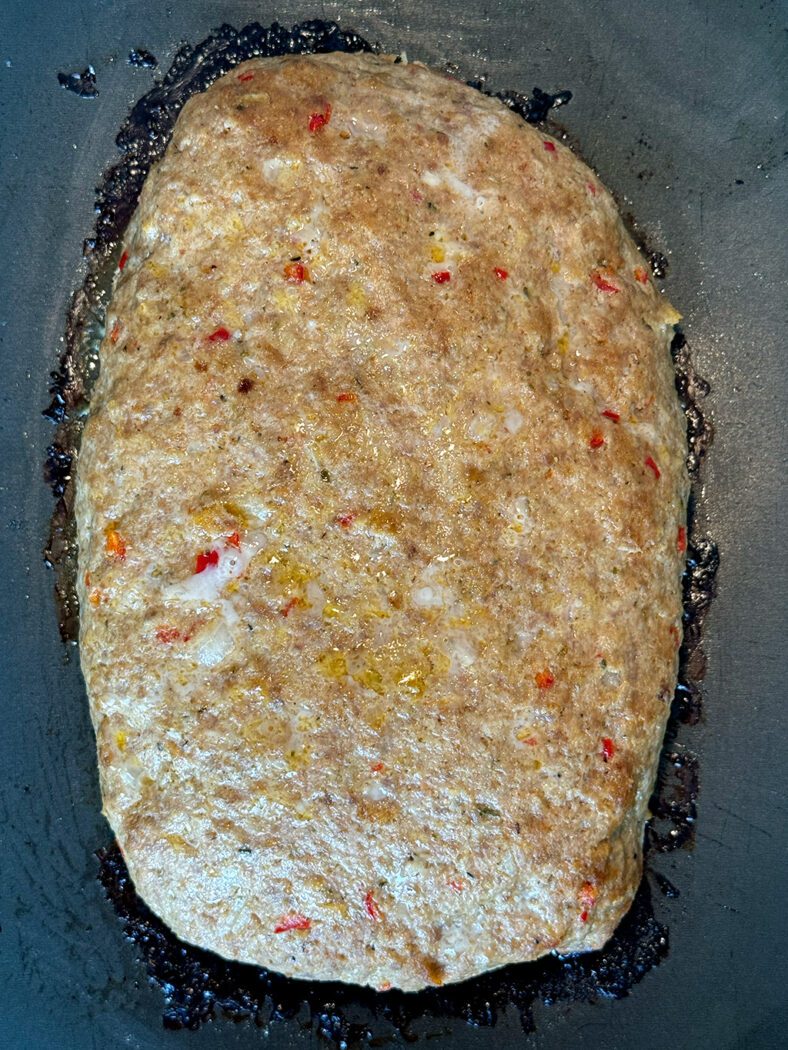
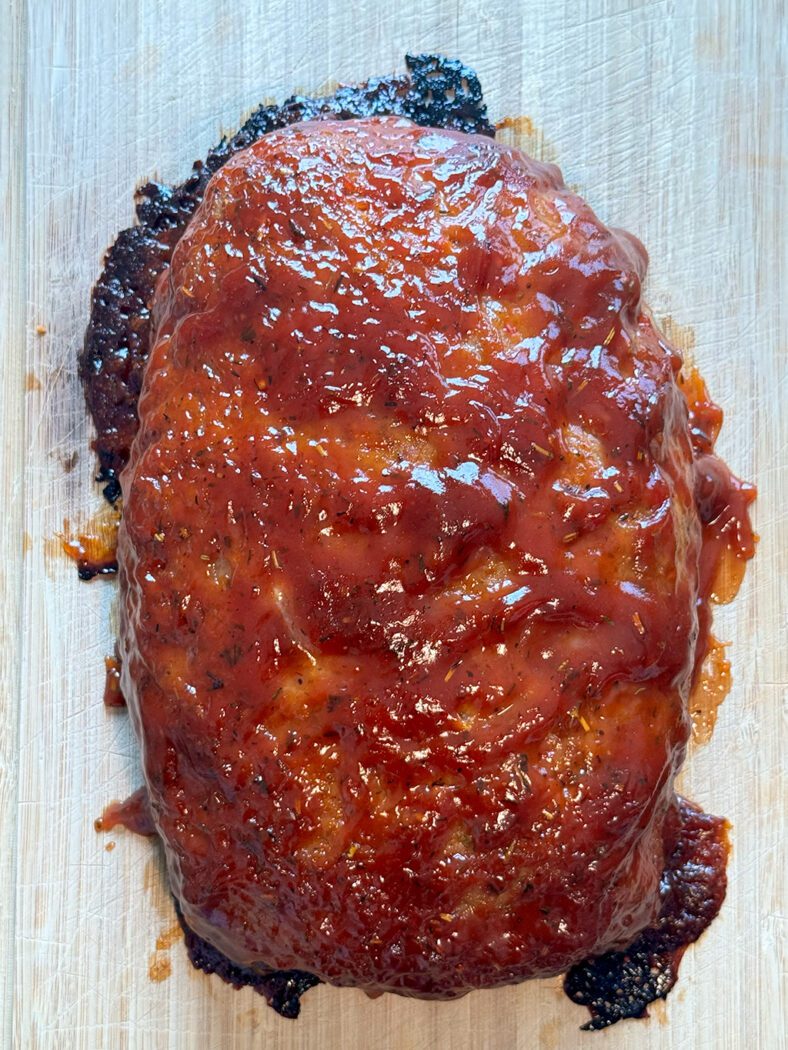
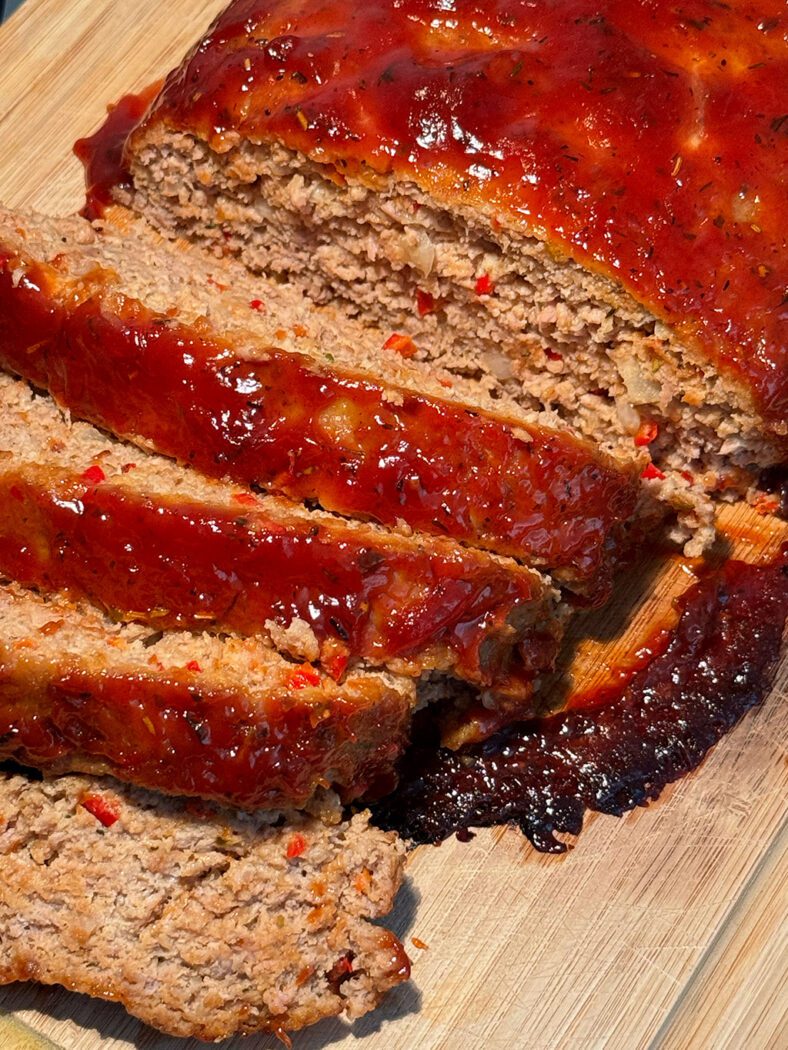
Want more delicious dinner ideas? Check out these recipes below!
Best Homemade Meatloaf Recipe
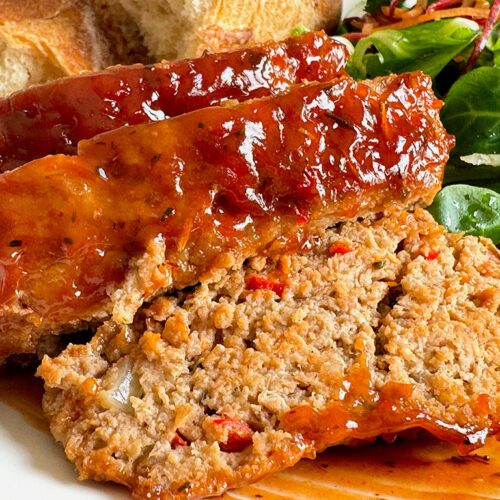
Homemade Meatloaf (as Good as Mom’s Recipe)
Equipment
- 1 Small saucepan
- 1 Stick blender or food processor Optional (you can crumble bread by hand if desired)
- 1 Bowl for mixing
- 1 Baking tray
- 1 Basting brush
- 1 Meat thermometer
Ingredients
Meatloaf Glaze
- 236 ml (1 cup) Ketchup
- 2 tbsp Dijon or brown mustard See recipe note 1
- 100 grams (½ cup) Brown sugar
- 1 tbsp Dried herbs See recipe note 2
Meatloaf
- 100 g (1½ cups) Breadcrumbs See recipe note 3
- 1 Small onion grated or finely diced Approx. ½ cup (See recipe note 4)
- 1 Sweet or Red Bell Pepper Approx. ½ cup (See recipe note 5)
- 700 g (1½ lbs) Ground beef and pork 50/50 combination
- 170 g (1 cup) Greek yoghurt
- 60 ml (¼ cup) Ketchup
- 3 tbsp Worcestershire sauce
- 1 tbsp Dried herbs
- Extra Virgin Olive Oil
Instructions
Meatloaf Glaze
- Make the glaze. Combine the glaze ingredients in a small saucepan and mix over low heat until the sugar is dissolved. Set aside.
Meatloaf
- Preheat the oven. Preheat the oven to 220C (425F).
- Make the breadcrumbs. Add 3-4 slices of bread to a food processor and blend. If crumbling by hand, crumble the bread into as small of pieces as possible.
- Make the panade. Add breadcrumbs and yogurt to a bowl so that the mixture forms a paste. Let soak for a few minutes until the bread absorbs any liquid.
- Combine the meatloaf ingredients. In a large bowl, combine all of the meatloaf ingredients except the olive oil and mix well (meat, egg, spices, ketchup, worcestershire sauce, grated onion, and diced pepper, breadcrumb mixture)
- Form a loaf. Form the mixture into a loaf using your hands, working out all cracks and air pockets. Once formed, lightly brush the top with extra virgin olive oil to help the browning process.
- Bake the meatloaf. Place into the oven for 30 minutes. After 15 minutes, rotate the baking tray to ensure even cooking and browning. After 30 minutes, remove the meatloaf from the oven. Wipe away any excess fat with a paper towel.
- Glaze the meatloaf. Using the basting brush, coat the meatloaf with glaze thoroughly.
- Bake for another 10 minutes. Return the meatloaf to the oven for 10 minutes to allow the glaze to set. Using a meat thermometer, pay attention to its internal temperature. You want 69-74C (155-165F). Anywhere in this range is fine, as it will continue to cook for a few minutes after removal from the oven. Remove from the oven.
- Rest and serve. Allow the meatloaf to rest for 10 minutes before serving.
Notes
- If you’re using a dijon mustard, be careful not to add too much. Dijon mustard can be quite pungent and too much can cause your glaze to pack more of a punch than you would otherwise desire.
- For the dried herbs, I use a mixture of dried parsley, rosemary, thyme, and savory, called herbes du provence in French-speaking countries (herbs of the province, or countryside). But you can use whatever you have on hand, such as just one of the dried herbs or any combination you like.
- The size of the breadcrumb will affect how much you use. For a thicker, coarser breadcrumb, you may need to use a little more than a cup and a half. If you don’t have stale bread on hand and you don’t want to use your fresh bread, you can absolutely use store-bought breadcrumbs, such as Panko or something similar. I usually happen to have a stale piece of bread or two, which I prefer not to waste. It’s also usually whole-grain brown bread, which I find adds a slightly rustic character to the meatloaf.
- I find that grating the onion is one of the best ways to not only get the maximum juice and flavor from the onion, but also ensure that the pieces are small enough and cook evenly without sautéing first. As with the pepper, if you’re dicing the onion, make sure to dice it as finely as possible. Otherwise it won’t fully cook.
- In this specific iteration of the recipe, I couldn’t find red bell pepper, so I used a sweet red pepper. The difference is negligible.
Meatloaf Frequently Asked Questions
What internal temperature should the meatloaf be cooked to?
For food safety reasons, always cook the meatloaf to an internal temperature of at least 74C (165F). You can remove it from the oven slightly before reaching this temperature, as it will continue to cook for a few minutes after removal from the oven. Keep in mind, overcooking the meatloaf could render it dry.
Should I cover meatloaf when cooking?
No. Do not cover the meatloaf while baking. This will cause it to steam. Covering the meatloaf while cooking will also prevent browning and caramelization, which are crucial to the meatloaf’s flavor and texture.
Can I omit the panade from the meatloaf?
No. The panade is a critical ingredient to both the meatloaf’s juicy and moist texture. The added fat from the yogurt or milk adds richness, while the lactic acid aids in browning.
How do I reheat meatloaf?
To reheat meatloaf, preheat the oven to 175C or 350F. Use a shallow baking dish or even a pie pan. Cover the meatloaf with foil to prevent it from drying out. Depending on the size and thickness of the meatloaf, reheating it in the oven should take between 20-30 minutes. Using a meat thermometer, check that its internal temperature has reached 74C (165F).
How long does meatloaf keep for in the fridge?
The USDA recommends using cooked beef and pork within 3 to 4 days, if kept at a temperature of 4°C or 40°F.


